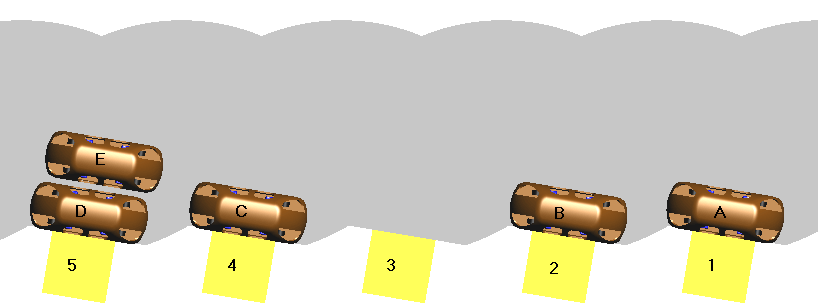The berths are in a sawtooth configuration but with half the sideways offset. This means that an empty berth can only be filled if the one behind is empty and a vehicle can only leave if the berth in front is empty. The berths can be much closer together than with Park-and-Wait.

The sequence: Vehicle C leaves, Vehicle E moves into berth 3, results in the gap being propagated along the station. Result: vehicles arrive and depart singly rather than in a convoy and the majority of berths are active.

All the filled up-stream berths up to the next empty one would be stuck. However if reversing could be allowed in exceptional circumstances then the next berth can be cleared but the two berths either side will be out of action.
If you want to bring in a failing vehicle the best place would be an emergency berth at A in the figure below so that any passengers in the stricken vehicle can alight.

If there was a vehicle in C it would be able to leave and it should be possible to use B but without using its wait position.